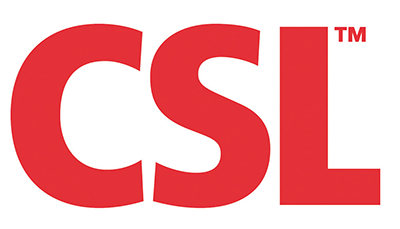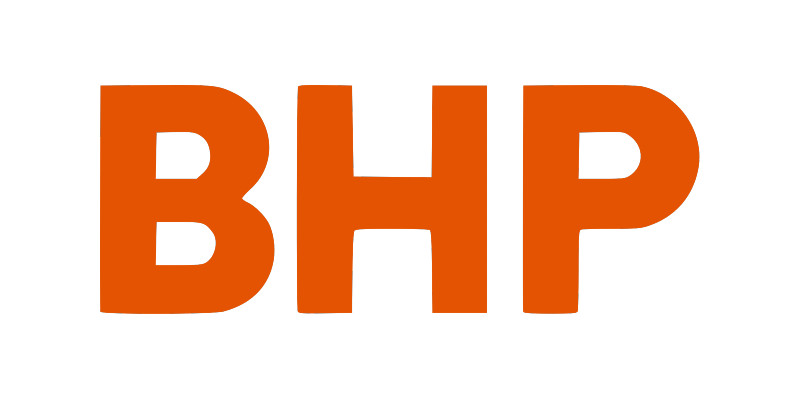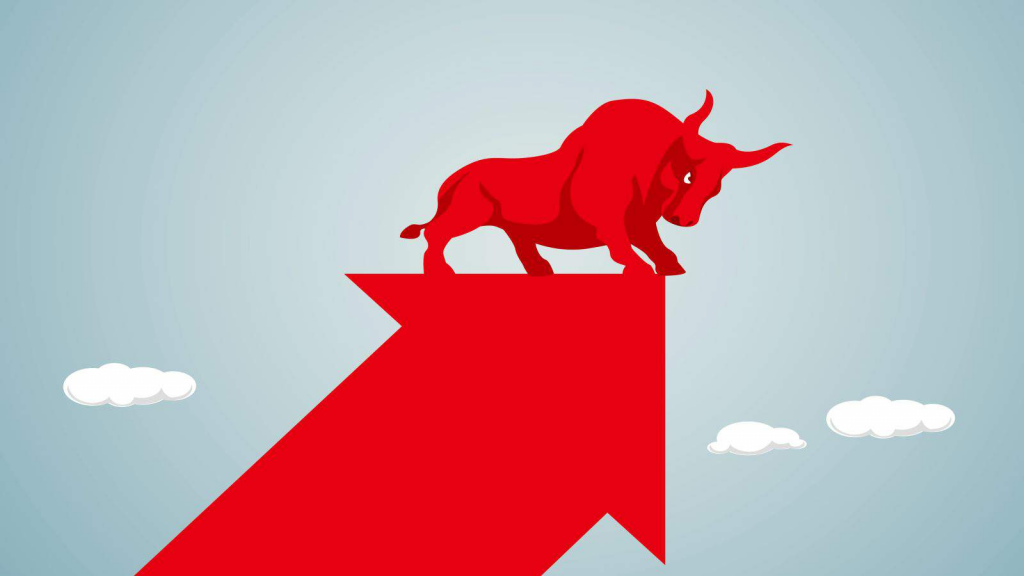Disclosure: Privacy Australia is community-supported. We may earn a commission when you buy a VPN through one of our links. Learn more.
Best Performing ASX 200 Stocks

Given the scale of Australia’s economy, the ASX (‘Australian Securities Exchange’) ranks as one of the world’s major stock exchanges.
Among the more than 2,000 firms listed on the ASX, which makes it the largest exchange in Australia, with many of the country’s most prominent blue-chip corporations… And in this review, we’ll cover the very best-performing ASX 200 stocks.
Table of Contents:
- ASX 200’s purpose
- 📚 Reviews
- 1. 🦅 CSL 👑 – (ASX:CSL)
- 2. Cochlear – (ASX: COH)
- 3. Macquarie – (ASX:MQG)
- 4. Commonwealth Bank – (ASX:CBA)
- 5. BHP – (ASX: BHP)
- 6. Goodman – (ASX:GMG)
- 7. Ramsay Health Care – (ASX:RHC)
- 8. Coles Group – (ASX:COL)
- 9. Sonic Healthcare – (ASX:SHL)
- 10. Auckland International – (ASX:AIA)
- 📖 Buying Guide: Traders & Investors
- 🌞 Conclusion
- FAQs
How We Choose Our Platforms 💡📚
With all the recent news, it’s no wonder there’s so much stress.
By investigating 1) new technologies, 2) new fields of knowledge, 3) the importance of relationships, and 4) new economic models, Privacy AU seeks to enrich the lives of its audience members. From investing in people, farms 🐄, and growing food; to diversifying your holdings.
We cover it all… To this purpose, we gather information rapidly while keeping an eye on the genuineness, reliability, competitiveness, value, and transparency of each product.
Purpose: Why the ASX 200 Exists
The ASX 200 is often used as a proxy for the state of the Australian economy because of its prominence as a performance benchmark for the Australian share market.
The 200 biggest firms (by market capitalization) listed on the Australian Stock Exchange make up this index. Due to the general belief that bigger firms’ stock prices are more stable, investors have a strong interest in these businesses.
It’s a list of the most actively traded stocks on the Australian Securities Exchange. They’ve made a reputation for themselves in the industry, and for good reason: they’re successful.
Top-Performing ASX 200 Stocks – Reviews 📘
1. CSL – Best Performing ASX 200 Stock for Share Price
⭐ At the front of the pack for ASX 200 index funds is CSL Limited.
ASX’s and Australia’s third biggest business by market cap is a healthcare provider.
CSL (ASX:CSL) is a frontrunner in the biotech industry worldwide, and for good reason: the business focuses on creating cures for very uncommon and dangerous illnesses like influenza.

Similarly, CSL (which stands for Commonwealth Serum Laboratories) has been around for more than a century. In 1916, it was established with the goal of giving Australians easy access to cutting-edge medical services, such as novel antimicrobials.
Insulin, penicillin, and vaccinations against influenza and polio have all come from CSL since the company’s beginnings.
Latest News, CSL (ASX:CSL) 📰
The ASX’s biggest healthcare stock is CSL Limited. This stock is the only one in the healthcare sector of the ASX 200 that beat the index in 2022.
Nevertheless, CSL’s share price became slightly negative in 2022, falling by 1% or around $3 to $287.76 at year’s end.
The purchase of Swiss pharmaceutical firm Vifor Pharma by CSL for $16.4 billion was the most notable event in 2022. CSL’s typical immunology-focused portfolio was broadened in August when a merger allowed it to enter the kidney disease and anaemia management industries.
Since the purchase of Vifor was finalised after CSL’s fiscal year ended in FY22, the company’s financial statements did not include the addition of the acquired company.
The top line for this ASX 200 healthcare behemoth rose by a subdued 3% to $10.7 billion, while the company’s net profit after taxes (NPAT) fell by 6% to $2.3 billion.
CSL’s production cycle is rather lengthy, therefore the consequences of COVID didn’t fully manifest until FY22. The company’s plasma collections, a key component in making its therapies, have been kept under lock and key. This caused supply reductions and price hikes within its Behring business, both of which have now improved dramatically.
CSL also revealed a CEO succession plan, which is noteworthy.
After 10 years as CEO, Paul Perreault has decided to retire this coming March. Chief Operating Officer of CSL, Dr. Paul McKenzie, will take over the company.
2. Cochlear – Runnerup Best Performing ASX 200 Stock for Share Price
⭐ Cochlear comes in second place among the ASX 200 healthcare shares.
Cochlear’s (ASX: COH) share price fell 5.6% annually, below the ASX by a narrow margin. The annual closing price of Cochlear stock was $204.12.

Cochlear went through an acquisition in 2022, too, but one far smaller than CSL’s. In April, it was revealed that it will pay around $170 million to purchase Oticon Medical from Demant A/S (CPH: DEMANT). More than 75,000 people worldwide have relied on Oticon’s hearing implants, making the Danish firm a leader in the field.
This, however, reached an impasse. The Australian Competition and Consumer Commission (ACCC) raised “serious preliminary concerns” about Cochlear’s planned purchase of Oticon last month.
Shortly after, a separate decision to submit the issue to a higher level of assessment was taken by the UK Competition and Markets Authority (CMA).
Signs of Recovery from Covid
Cochlear’s financial performance in FY22 demonstrated the company’s ongoing recovery from COVID.
The number of cochlear implants sold increased by 5%, helping to boost overall sales income for the industry by 3% to $935 million. Meanwhile, core net income increased by 18% to $277m.
On a larger scale, the company’s cochlear and acoustic implant products improved hearing for almost 40,000 patients in FY22.
Cochlear projects a net societal benefit of nearly $6 billion through better health outcomes, savings in educational costs, and increased productivity during the recipients’ lifetimes.
Five years after the release of its predecessor, the Nucleus 7 sound processor, the business released the Nucleus 8 at the year’s conclusion. As recipients take advantage of this opportunity to update their gadgets, this will serve as a stimulus for increased sales.
3. Macquarie Group – Best Performing ASX 200 Stock for Commodity Share Price
⭐ If you want to invest in commodities, this is the best-performing ASX stock and the third-best overall for share price across sectors…
At a current market capitalization of A$68.322 billion, Macquarie Group Limited is and the share price is A$258, it reaches our #3 on our list of the 10 Best ASX Stocks to Buy.

Macquarie Group (ASX:MQG) is a financial services provider and one of Australia’s most valuable firms. Its stock has performed well over the long term despite experiencing volatility.
Macquarie Group stock is down 18% year to date, in line with the decrease in many other financial equities worldwide. However, there is still hope for the corporation if it can sustain its position as a leader in the financial services industry.
4. Commonwealth Bank of Australia – Top-Performing ASX 200 Stock Overall
⭐ Commonwealth Bank shows a combination of immense market cap and share price, although it doesn’t quite top the list for either.
This banking firm (ASX:CBA) tops our list of the 10 Best Stocks to Buy on the Australian Securities Exchange for the finance sector.
With a market value of A$181 billion, they feel well-prepared financially.

One of Australia’s most prominent financial institutions, the Commonwealth Bank of Australia, has significant size and competitive advantages.
Although the stock price hasn’t increased much since 2013, the dividend yield is about 3.57% and the bank should profit from higher rates by receiving greater net interest revenue.
It saw an approximate $2.5 billion or 12% growth in operational performance, with good credit quality, according to Commonwealth Bank of Australia CEO Matt Comyn. Despite intense competition, we were able to maintain our focus and raise our volume significantly in our traditional areas. This comes after disbursing $3.6 billion in dividends.
5. BHP – Best Performing ASX 200 Stock for Market Cap
⭐ BHP is the largest mining business in the world and the most valuable firm listed on the Australian Stock Exchange at the present time.
BHP is a global mining conglomerate that owns and runs a variety of mines. Coal, iron ore, copper, and nickel are only some of the commodities it produces.

An investment in BHP (AXS:BHP), the top blue chip on the ASX, offers minimal risk and exposure to many commodity markets.
Why They’re Number 1 for Market Cap
Australian conglomerate BHP Group Limited operates in the mining, metals, natural gas, and petroleum industries. BHP, the largest mining company in the world, recently reported its greatest annual profit on record, thanks to a historic increase in commodity prices.
In spite of the fact that Chinese demand has dropped because of slowing economic activity and the CCP’s pursuit of a Covid-zero policy, management is confident that this decline will prove temporary.
And since it produces many of the important manufacturing metals required for electrification and batteries, such as copper, the company stands to gain substantially from the worldwide energy transfer towards renewables.
As a result of these factors, BHP seems to have a solid foundation and might be a company to keep an eye on in the future.
6. Goodman Group – Top ASX 200 Stock for Real-Estate
⭐ As of December 2022, AU$34.826 billion was the market cap.
Given its current market value of A$34.826bn, Goodman Group (ASX:GMG) is placed at #6 on our list of the 10 Best Performing ASX Shares to Buy.
The stock of Goodman Group, an Australian industrial property firm, has performed well from the onset of the Great Recession until recently, thanks to the country’s improving economic situation.

However, with the rise in U.S. interest rates this year, many investors have moved their money from the real estate market into the safer haven of government bonds.
This means that Goodman Group, like many real estate equities, might disappoint in the nearish term due to the aforementioned challenges. However, with Australia’s economy expanding, the enterprise might become successful in the future.
7. Ramsay Health Care – Big ASX 200 Stock for Healthcare
⭐ AUD market cap was 15.193 billion as of December 2022.
With hospitals in Australia, Indonesia, Malaysia, France, and the United Kingdom, Ramsay Health Care is a worldwide hospital organisation providing a full spectrum of medical services.

Market caps for Ramsay Health Care (ASX:RHC) as of early December 2002 was A$15.193 billion. However, the share price of Ramsay Health Care hasn’t risen much after March 1, 2015, despite the fact that the stock performed quite well until 2015. Free cash flow yield is quite good, and the company’s yearly yield is roughly 1.46 per cent.
Long-term expansion is possible if the business is able to boost its cash flow and profits. Ramsay Health Care may continue to lag the market in the foreseeable future as a result of the rising interest rates, which have been a drag for several American real estate firms.
8. Coles Group – Best ASX 200 Stocks for Food Services
⭐ As of December 2022, their market cap was AU$22.619 billion.
Stock symbol: ASX:COL, market cap: A$22.619 billion as of early December, Coles Group is an Australian supermarket and department store chain.

Coles Group Limited’s earnings power is significant given the company’s market dominance.
Despite challenges including COVID-19 lockdowns and floods in the first half of the 2022 fiscal year, Coles Group managed to increase sales by 2% year over year and maintain similar profitability before interest and tax. Reuters reports that the future price-to-earnings ratio for Coles Group is 21.11, which indicates that the market values the firm fairly.
9. Sonic Healthcare – Runner-Up Best ASX 200 Stocks for Healthcare
⭐ As of December 2022, Sonic’s Australian Dollar Market Cap was $15.167 billion.
The advanced medical division of Sonic Healthcare (ASX:SHL), which employs about 41,500 people throughout the globe, is one of the biggest in the world.

To put it another way, the firm provides more private pathology services than anybody else in Australia, Germany, Switzerland, or the United Kingdom. Australian medical centre provider Sonic Healthcare is also the biggest in the country.
The corporation announced A$9.3 billion in sales and A$1.5 billion in net income for fiscal year 2022, both all-time highs. Shares in Sonic Healthcare Ltd has fallen from roughly A$46 to A$30.78 due to decreasing growth, however, the firm has performed quite well long term.
For the June 2022 quarter, the firm reported diluted normalised EPS that was marginally below the June 2021 quarter.
The ASX stock symbol for Sonic Healthcare is SHL.AX, and the company is worth A$15.167 billion.
10. Auckland International – Top ASX 200 Stocks for the Airport Sector
⭐ In Australian Dollars, the market cap was 11.119 billion as of December 2022.
The New Zealand’s Auckland airport is owned by Auckland Airport firm (ASX:AIA). After two years of losses due to the epidemic, the airport expects to turn a profit as demand increases.

Carrie Hurihanganui, the CEO, made these remarks, “Our recovery is doing well after two years of interruption and strict cost control. We continue to be cautiously optimistic about the economy’s prospects for the next 18 months”.
Statistics released in September by Auckland Airport revealed that in the financial year ending June 30, 2019—the entire year during which the airport was not affected by the pandemic—total number of passengers were 71% of the pre-COVID equivalent.
Total passenger numbers in October this year were similar to just 72% of what they were before the COVID outbreak. Though the stock price of Auckland Airport is unlikely to recover if the epidemic becomes worse, the airport’s finances may get closer to normal if visitation patterns improve.
Top ASX 200 Stocks – Trader’s & Investor’s Buying Guide
As a stock exchange, listed firms on the Australian Securities Exchange (ASX) offer shares to investors in order to raise capital for ongoing operations. Let’s find out more about how the ASX 200 works and key things to know as a new investor.
Honesty is a very expensive gift, don’t expect it from cheap people. Warren Buffett (Source)
What is the ASX 200 Index? The Key Benchmark…
Stock exchanges are trading places where investors buy and sell securities…
Even though more than 2,000 firms are traded on the ASX, it’s common practice to discuss market conditions by referring to an index’s performance rather than the whole stock exchange. Thus, why the ASX 200 is used as a benchmark.
In fact, there are 2 key benchmarks and indices that analysts and investors use to measure the performance of the Australian stock market. These indices are the:
- 🗝️ ASX 200
- 🔑 All Ordinaries (ASX: XAO)
On the other hand, there are a plethora of specialised indexes that follow just certain types of markets or subsets of stocks.
The ASX 200 index follows the performance of the 200 most valuable firms listed on the exchange. The All Ords is a reflection of the success of Australia’s 500 largest enterprises. The market capitalization of a firm is the total value of its shares trading at the current price multiplied by the total number of outstanding shares.
The ASX 200 is rebalanced quarterly (in March, June, September, and December) by Standard & Poor’s (S&P) to ensure it accurately reflects the performances of the 200 biggest firms across sectors:
The 11 Industries in the ASX 200…

The Australian Securities Exchange 200 index is made up of 11 different industries, and below is a breakdown of each one:
- Discreet consumer goods: The enterprises in this sector provide the kinds of luxury items and experiences that consumers like splurging on when they have more cash to spare. Among them are the finest department stores, electronic retailers, motels, dining establishments, and automobile manufacturers.
- Consumer staples: As a category, it provides us with the necessities we rely on on a daily basis. Companies in this sector include supermarkets, drugstores, cigarette producers, and beverage distributors.
- Energy: This sector includes oil and gas producers and explorers, as well as manufacturers of drilling rigs. Utilities are where you’ll most often find renewable energy firms.
- Financial institutions: such as banks, asset managers, funds, and insurance providers make up the financial sector.
- Healthcare: These facilities and related businesses such as pharmaceutical and medical device manufacturers are included here.
- Industrials: Construction and engineering firms, commercial and professional service providers, and travel corporations (such as airlines) are all examples of companies whose stocks are classified as industrials.
- IT industry: They provide both hardware and software for computers as well as offer related services and produce semiconductors.
- Materials: It includes not only those that mine and process metals, but also those that make chemicals, building supplies, packaging materials, containers, and wood and paper products.
- Real estate: It consists of construction firms, real estate investment trusts, and property management firms (REITs).
- Comms: Shares in telecommunications, media, and entertainment firms, such as television networks and advertising networks, are included in the Communication Services sector.
- Utilities: These corporations offer essential services such as water, electricity, and gas.
If you didn’t know: 📚: How Stocks Work
How Crucial is the ASX 200?

Although it is not a perfect proxy for the whole stock market, the index provides a good indication of its overall performance.
Because the ASX 200 makes up over 80% of the entire value of the Australian share market. That’s why it’s a reliable indicator of how the AU economy is doing as a whole.
A stock’s or a portfolio’s performance may be measured against the ASX 200, making it a useful benchmark. The goal of certain funds may be to match or exceed the performance of the index.
Due to its inclusion of a wide range of liquid equities that are actively traded and represent important Australian listed firms, investing in the index may also assist attain a diversified portfolio.
How Companies Join the ASX 200
In order to be a part of the ASX 200, a firm has to be publicly traded as either ordinary or preferred shares. Preferred shares, in contrast to common stock, do not provide their holders with the power to vote (but come with other perks, like a fixed dividend). Stocks that operate like both an equity and a bond are not allowed to be included.
For an ASX company to be included in the index, it must be sufficiently big and liquid. Liquidity, as used here, relates to the ease with which investors may buy and sell a company’s stock on the Australian stock market. The frequency and volume of trading in these shares are indicators of their liquidity.
Guide 📙: How to Trade & Invest in the ASX 200…
Risk comes from not knowing what you’re doing. Warren Buffett (Source)
Review of the ASX 200…

Australia has a robust economy with a nominal GDP of $1.543 trillion, despite its relatively small population of 25.7 million. In 2021, the country’s GDP per citizen was $59,934.13, putting it in the top tier of global economies.
Fitch notes that Australia’s economy is resilient since it expanded for 30 consecutive years before the epidemic. Given the high inflation, increasing interest rates, and declining global economy, the ratings agency forecasts GDP growth of 1.5%.
However, the country’s inflation rate is forecast to reach a high of over 8% this year before beginning a gradual decline in 2019. Australia’s central bank has increased interest rates to a 10-year high of 3.1% in an effort to curb inflation. Australia has a low unemployment rate of around 3.4% despite its high inflation rate.
Australia’s long-term development potential is appealing because of the country’s enormous landmass, low population density, and closeness to the booming economies of Asia.
Specifically regarding Asian countries, the Australian government states in an official document, “Our geographical position and cultural variety also contribute to our hardiness. By 2026, fast-growing Asia will contribute 44 per cent of global GDP”.
Most Australian exports, including those of mineral and energy resources, as well as those of services and agricultural products, are already geared toward the Asian market. Our economy is very productive and varied, making it resistant to economic shocks like the current epidemic.
The mining industry accounts for 14.6% of Australia’s GDP, followed by the healthcare and education sector at 13%, the financial sector at 7.6%, the construction sector at 7.3%, and the manufacturing sector at 5.8%.
Australia sends 36.0% of its exports to China, 12.2% to Japan, 7.1% to South Korea, 4.7% to India, 4.6% to the United States, and 3.6% to the European Union.

As the Indian economy continues to develop, the country will likely need a great deal of iron ore to build up its infrastructure, meaning that India will become an increasingly important market for Australian exports.
ASX Reviewed 📖〽️
Given the scale of the Australian economy, ASX (which stands for the Australian Securities Exchange) remains one of the major stock exchanges in the Asia-Pacific area. Among the more than 2,000 firms listed on the ASX, which makes it one of the largest exchanges in Australia, are some of the country’s most prominent blue chip corporations.
Read 📚: How Stocks Work…
Worth of Lithium in 2024

Have you heard the buzz about lithium stocks? We thought we’d cover this hot topic in case you’re curious about lithium mining companies.
Lithium, an alkali metal with a soft, silvery-white appearance that may be found in brine reservoirs and lithium-containing rocks like spodumene, is essential for creating practically all traction batteries used in electric vehicles and consumer devices today.
As mentioned earlier, electric cars have been around for a while, but it is only lately that they have become a more practical alternative for customers due to advancements in technology and a reduction in price. The need for lithium to fulfil various consumer needs has risen in tandem.
The International Energy Agency predicts that between 2020 and 2040, lithium consumption would increase by more than 40 times due to the rising popularity of electric vehicles and the need for more energy storage.
The worldwide lithium market was worth $6.83 billion in 2021, and it is projected to rise from 2022 to 2030 at a CAGR (compound annual growth rate) of 12.0%, according to research by Grand View Research.
Favourable global demand patterns for consumer electronics, a rise in demand for rechargeable batteries, the growing use of electric cars, and government programmes and incentives for more sustainable energy choices are all contributing to this expansion.
However, this lithium demand is not going to be easy to satisfy, as McKinsey predicts that lithium prices would increase by over 550% in a year due to the surge in demand for electric vehicles in 2020. Lithium carbonate prices had risen to over $75,000 per metric tonne by the beginning of March 2022, while lithium hydroxide prices had risen to over $65,000 per metric tonne.
Stocks in companies involved in the lithium business, which is predicted to have high secular growth, might provide an excellent opportunity for investors.
Sociedad Quimica y Minera (NYSE:SQM), Livent Corporation (NYSE:LTHM), and Albemarle Corporation (NYSE:ALB) are just a few of the major players in the worldwide lithium battery industry.
How to Invest in Lithium
An investor in lithium equities must decide whether to put money into emerging firms or those with a longer track record.
Startups in the lithium industry are in their formative years and are only now beginning to develop their mines and launch their goods. They may not be profitable. Share price growth potential is higher, but they carry a higher level of risk.
Larger, more well-established enterprises are beginning to produce and market lithium goods. They are more stable and more likely to pay dividends to their investors. However, they do not have as much room for expansion in terms of stock returns.
You’ll also need to choose if you want to put your money into a company that really produces lithium (like lithium mining stocks) or into a company that uses lithium in some way (like lithium battery manufacturers and lithium recycling stocks).
When the price of lithium rises, mining companies do well. Both the supply and demand for lithium products and the quality of such items are crucial considerations for producers.
If you want to invest in lithium, it’s a good idea to spread your money around. Talk to a financial professional about which lithium stocks might be best for you if you need assistance bringing this all together.
The happiest people discover their own nature and match their life to it. Ray Dalio (Source)
Conclusion
The 200 firms that make up the Australian Securities Exchange (ASX) are a great starting point for any new investor interested in the stock market.
Given that many of them are well-known brands, you undoubtedly have some familiarity with the goods and services they provide and the industries in which they operate.
Since many of the ASX 200 are also blue chips, investing in them is safer than in small-cap equities.
This reduces the risk of losing a large portion of your investment in them, which is another advantage they provide to inexperienced investors. You could also supplement your income with dividends from many of the companies listed there.
Best ASX 200 Stocks (AU) 📙 – FAQs
1. Which industries dominate the ASX 200?
Commonwealth Bank of Australia (ASX: CBA), National Australia Bank Ltd (ASX: NAB), Westpac Banking Corporation (ASX: WBC), and Australian and New Zealand Banking Group Ltd are the four largest companies in Australia, making the financial sector the most influential (ASX: ANZ).
After manufacturing, the materials industry is the biggest in the economy. It includes major mining corporations like BHP Group Ltd (ASX: BHP) and Rio Tinto Limited (ASX: RIO).
Third, is the healthcare industry, which includes CSL Limited (ASX: CSL), a worldwide leader in biotechnology, and Cochlear Limited, a global leader in the fabrication of hearing implants (ASX: COH).
2. Is there a problem with lithium investments?
Many lithium stocks achieved all-time highs by year’s end in 2021, but the sector ran into some resistance in 2022, and now those stocks are down significantly from their peaks.
In part, this might be attributed to the cyclical character of the market. Lithium stock prices eventually had to adjust after seeing such a sustained increase for so long. Goldman Sachs issued a market alert in late 2021 stating that the price of lithium equities was excessive. As predicted, prices have dropped to within Goldman’s expected range.
For the most part, recent stock market falls may be attributed to the Federal Reserve’s decision to sharply increase interest rates.
Despite occasional dips, lithium stocks could perform well if the demand for EVs and other technological products continues to rise.
3. How do stock dividends work?
A dividend is a distribution of a company’s earnings to its owners. Dividends are a kind of periodical payment to shareholders and a means through which stock investments might generate profit.
However, dividends aren’t available for every stock. You may have heard of “dividend stocks” in the news lately; these are the companies to buy if you want to invest for dividends. Therefore, in the present high-inflation climate, dividend stocks might serve as a kind of financial insurance for investors.
Stocks of companies that consistently raise their dividend payouts (e.g. ASX 200s…) tend to be more stable than those of the market as a whole. Some businesses deal with rising prices by increasing dividends. In addition, dividend payments may act as a buffer against volatility in a stock’s overall performance.
- Read 📚: 10 ASX Dividend Stocks for 2024…
4. Where does Tesla get its lithium from?
Piedmont will start sending Tesla 125,000 metric tonnes of lithium concentrate under the terms of the new agreement. Instead of predetermined pricing, as was the case under the prior arrangement, Tesla will be charged based on the going rate for lithium at the time of shipping.
5. When it comes to lithium production, what country holds the crown?
Lithium deposits in Chile are the greatest in the world at 8 million tonnes. This makes it an industry leader, surpassing Australia (2.7 million tonnes), Argentina (2 million tonnes), and China (1 million tons). Portugal has a relatively low quantity of precious raw elements in Europe.
6. Is Tesla abandoning its reliance on lithium?
Tesla said in its investor presentation for the quarter ending September 30 that the firm is switching the battery cell chemistry used in its standard-range cars. Lithium-iron-phosphate (LFP) chemistry will be used in the new batteries, as opposed to the nickel-cobalt-aluminium that Tesla will still utilise in its extended-range cars.
7. Could we soon face a global lithium shortage?
Although lithium is best recognised for its use in portable electronic devices like laptops and smartphones, it is also an essential part of the power infrastructure of electric cars. Sad to say, it seems that our world is rapidly depleting its supply of this crucial material. In addition, it’s a rarity on a global scale.
8. Why are lithium stock prices falling?
The release of covid-19 limits and the impending termination of electric car subsidies have created doubt about demand in the world’s second-largest economy, leading to a drop in Chinese lithium prices for the first time since May, according to Benchmark Mineral Intelligence.
9. Could all vehicles be electric if there were enough lithium?
In a recent interview with Yahoo Finance Live, Keith Phillips, CEO of Piedmont Lithium, said, “Yes, we’ll [eventually] have enough, but not by that time. Obtaining this material is going to be very time sensitive. Unfortunately, the global output of lithium won’t be able to keep up with demand by 2035.”
You Might Also Like:




